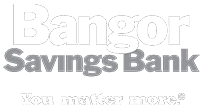
With the rise of online bill pay and debit cards, there has been a decline in the use of paper checks. However, they are still in use, with checks accounting for 15 percent of all non-cash payments in a recent study reported by the Federal Reserve. Checks are also heavily used for large money transactions, such as payroll and rent.
Here's a brief overview of paper checks and why they still have a place in today's marketplace.
Pros of Paper Checks
The following are important benefits that paper checks can offer.
- Some businesses only accept cash or checks. Credit and debit card processing can be an expense not every business can afford. Forbes reports that 55 percent of the 27 million small businesses in the U.S. do not accept cards. That is especially true with micro-merchants, such as landscapers and pool cleaners, who do not have the volume to justify payment processing costs. With some bills such as rent to a landlord, a check may be the only way to make a payment.
- Easy person-to-person payments. A personal check offers a convenient and accessible way to pay a private individual who does not need to do anything special to receive the money.
- Check use creates a paper trail. When you use a check, it automatically creates a paper trail that documents when proof of payment was received. Checks are a great way to prove that a lender, creditor, or government agency received payment.
- Payment can be stopped. While some banks may charge a fee, you can stop a payment on a check. That is not an option with other payment methods.
Items to Be Aware Of
When using a paper check, there are some things you will want to be aware of:
- Balance your checkbook to avoid overdrafts. If you bounce a check, you can face a fee from your bank as well as the check recipient.
- Merchants do not always take checks. Just as some merchants do not accept credit or debit cards, there are some merchants who do not accepts checks. If you are shopping at a new retailer and you are unsure what payment types they accept, it’s good practice to have a few payment options on hand.
- Know who you are giving your information to. When you give someone a check, it includes your account number, name, and contact information.
Takeaway
There are advantages and disadvantages to all methods of payment, so having the best options available to you is important. Check payments offer benefits not available with other payment options, stop a payment, and to create an easily traced paper trail for recordkeeping.
